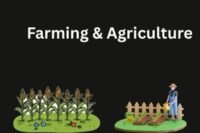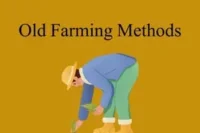China Use Technology to Secure the Nation’s Food Future
Published: 11 Apr 2025
As the world’s most populous country, China faces one of the largest agricultural challenges on Earth: feeding over 1.4 billion people with limited arable land and increasing climate pressures. Recognizing the urgency, China has committed to transforming its agricultural sector through technology-driven innovation, aiming to achieve national food security and become a global leader in agri-tech.
So, guys, without wasting time, let’s jump into the article to learn the China Use Technology to Secure the Nation’s Food Future
2. Background and Challenges
Key Agricultural Pressures:
- Shrinking Arable Land: Rapid urbanization and industrial growth have reduced China’s farmland.
- Aging Farmer Population: Rural youth are moving to cities, leaving farming in the hands of older generations.
- Climate Vulnerability: Floods, droughts, and shifting seasons increasingly impact yields.
- High Dependency on Food Imports: Especially soybeans and grains
To overcome these issues, China is turning to smart, scalable agricultural solutions rooted in technology.
3. National Strategy:
The 10-Year Agricultural Plan (2021–2031)
China’s Ministry of Agriculture and Rural Affairs launched an ambitious roadmap focused on:
- Food Security as a Top Priority
- Seed Innovation and Self-Reliance
- Smart Farming Technology
- Sustainable Land and Water Use
- Mechanization and Automation
This plan represents a paradigm shift—from traditional farming to precision agriculture.
4. Key Technological Innovations
4.1 Smart Farming and AI Integration
- Use of artificial intelligence to monitor soil health, predict weather patterns, and detect pests and diseases
- Real-time data analytics platforms to optimize fertilization, irrigation, and harvest scheduling

4.2 Drone and Satellite Monitoring
- Widespread use of drones for:
- Aerial seeding
- Pesticide spraying
- Crop health monitoring
- Satellite systems integrated with national databases to track agricultural trends and respond to disasters
4.3 Seed Technology and Biotech
- Focus on genetically improved, drought-tolerant, and salt-resistant seeds
- Development of domestic GMO technologies to reduce reliance on foreign seed imports
4.4 Internet of Things (IoT) in Agriculture
- Smart greenhouses and connected irrigation systems automatically adjust water and nutrient levels
- Sensors embedded in soil and equipment collect data for precision farming
5. Real-Life Impact:
In Henan Province, farmer Zhao Wei, who once relied solely on intuition and weather forecasts, now uses a mobile app connected to his soil sensors and drone system. He can monitor his wheat fields from home, receive disease alerts, and even activate automated irrigation.
“I used to lose crops because I couldn’t react fast enough. Now, the app tells me everything before I even see a problem,” Zhao explains.
“It’s like having a digital assistant in my fields.”
Stories like Zhao’s are becoming increasingly common, especially in high-tech agricultural zones created by the government.
6. Outcomes and Impact
| Indicator | Before 2010 | By 2024 |
|---|---|---|
| Mechanization in Farming | 30–40% | Over 72% |
| Domestic Seed Development | Low investment | Major national R&D priority |
| Smart Agriculture Zones | <50 | Over 1,000 pilot areas |
| Grain Self-Sufficiency Rate | Declining | Stabilized and improving |
| Food Security Global Index Rank | Outside Top 30 | Climbing steadily (Top 25) |
7. Global Influence and Partnerships
China is also exporting its agri-tech expertise to other nations through Belt and Road agricultural collaborations, offering:
- Smart irrigation systems to African nations
- Technical training in seed innovation in Southeast Asia
- Drone technologies for rice farming in South America
8. Challenges Ahead
Despite success, China faces ongoing obstacles:
- Ensuring equitable access to technology in poorer rural regions
- Balancing innovation with environmental sustainability
- Navigating public concerns over GMOs and data privacy
Reference
According to China’s Ministry of Agriculture, the 10-Year Smart Agriculture Plan outlines the country’s commitment to using technology to boost food security and modernize farming.
Here is the online source regarding China Use Technology to Secure the Nation’s Food Future
Author Name
ZHANG YUE ZHOU
Food security in China: past, present and the future
Online Source

- Be Respectful
- Stay Relevant
- Stay Positive
- True Feedback
- Encourage Discussion
- Avoid Spamming
- No Fake News
- Don't Copy-Paste
- No Personal Attacks

- Be Respectful
- Stay Relevant
- Stay Positive
- True Feedback
- Encourage Discussion
- Avoid Spamming
- No Fake News
- Don't Copy-Paste
- No Personal Attacks





